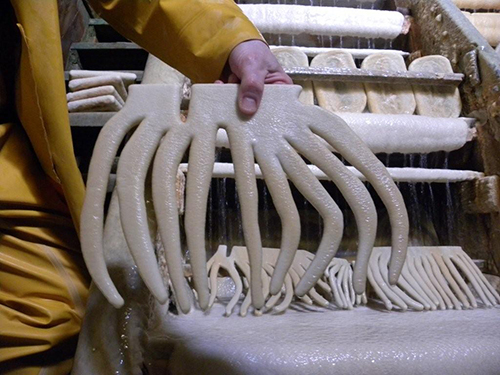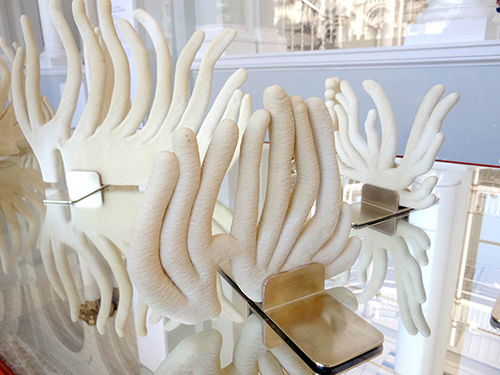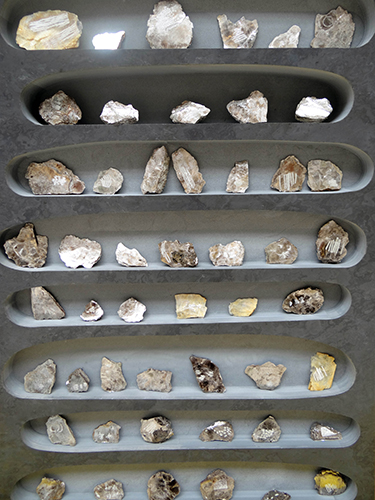OK, time to ‘fess up! I have to say I wasn’t very familiar with Ilana’s work before beginning to work with her, but once I began to delve into some of her past and current work I was immediately struck by her very personal and insightful take on geology. Viewing the work of a contemporary artist can be a confusing and mystifying business – it is sometimes difficult to discern what the artist is really trying to say. But working closely with Ilana offered curators here a unique opportunity to gain a real insight into not just how, but also why an artist chooses their subject and the way they develop their ideas and the medium chosen to portray it.
The other artists I have worked with have looked at minerals in terms of their appearance, such as colour or texture, or some inherent property like ultra-violet fluorescence, but Ilana’s exhibition was going to tell a much more personal, almost autobiographical, story.
A lot of Ilana’s work is sculptural and therefore can be ideally suited to geological themes, but a lot of her ideas and inspiration involve processes and time. We can see this in ‘The Library‘, where the pieces are framed within a context of time and the processes that went into their formation, whether billion or million year geological time-scales or the much quicker month-long creation of her intriguing pieces from mineral springs in France and Iceland.


However, it is her use of mica “books” that perhaps most captures my imagination. It is surely no coincidence that they are on display here in Scotland, as it was the work of that great Scottish geologist, Charles Lyell (1797 – 1875), that taught future generations of geologists to read the story of the Earth in the rocks and minerals.


Seeing the project develop and take shape has been hugely rewarding. The frequent contact with Ilana allowed us to discuss ideas, look at specimens and give advice and help, but it was about seeing how her ideas developed from little seeds into a full blown vision that was our real reward.
Ilana Halperin: The Library was open at National Museum of Scotland until Sunday 29 September 2013.
